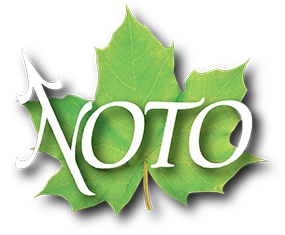
Forestry Survey
As you may remember, NOTO started an initiative to ensure that tourism was represented on the Local Citizen’s Committees (LCCs). As a result of this initiative, we have worked with the Cochrane and Sudbury District MNRF offices to write and send letters of recruitment in hopes to fill tourism vacancies in the Abitibi, Sudbury & Spanish Forest LCCs.
NOTO was also invited by Tim Reece (Management Forester, MNRF Bancroft District) to complete a Desired Forest & Benefits Survey for the Bancroft-Minden and Mazinaw-Lanark Forests. This district has been struggling to obtain any feedback from the tourism industry throughout the forest management planning process. As a result, Tim reached out to NOTO to help identify issues faced by the tourism from forestry activity and to identify key tourism values that should be protected throughout the 10-year forest management plan.
In this survey, NOTO identified key tourism values and protections the industry would like to see that are commonly mentioned throughout the province. Tourism values can include lakes, lodges, outpost camps, viewpoints, camp/picnic/shore lunch sites, recreational trails, canoe routes/portages, hunting stations, etc. It is important that tourism values are identified and protected throughout the FMP process.
The following are some of NOTO’s responses which were included in the survey.
-
Acknowledge all industries are key economic drivers. It is important to establish proper protections for tourism values in order for both industries to operate, thrive and prosper.
- Harvest should occur during the winter and only selective cutting should occur in order to maintain the wilderness/remote aesthetic aspect tourists are looking for in summer months.
- Designated Tourism Lakes should be identified as Enhanced Management Areas. Recreational EMAs in the last FMP grouped fishing, hunting, baitfish, snowmobiling, kayaking, etc. under one category. Many individuals, businesses and organizations felt that several lakes were under-protected.
- Maintain the “non-declining deer/moose/bear habitat” practice.
- A 400m minimum buffer should be used around Designated Tourism Lakes.
- Special attention should continue to be given to Moose Enhancement Areas.
- Ensure proper forest composition is re-established once forestry operations are completed.
- When possible, do not establish primary or secondary roads within 400m from a Designated Tourism Lake or 1km from remote lakes/remote outpost. Limit public access, decommission and replant the roads once harvest is completed. Access into remote areas greatly increases in regions where primary and secondary roads are established which increases harvest pressure and negatively impacts tourism operators.
- Use removable bridges when possible.
Tim was thankful for NOTO’s contributions to the Bancroft-Minden and Mazinaw-Lanark Forests and is looking forward to other opportunities where we can work together. NOTO would love to have the opportunity to contribute in this manner in other districts.
|





